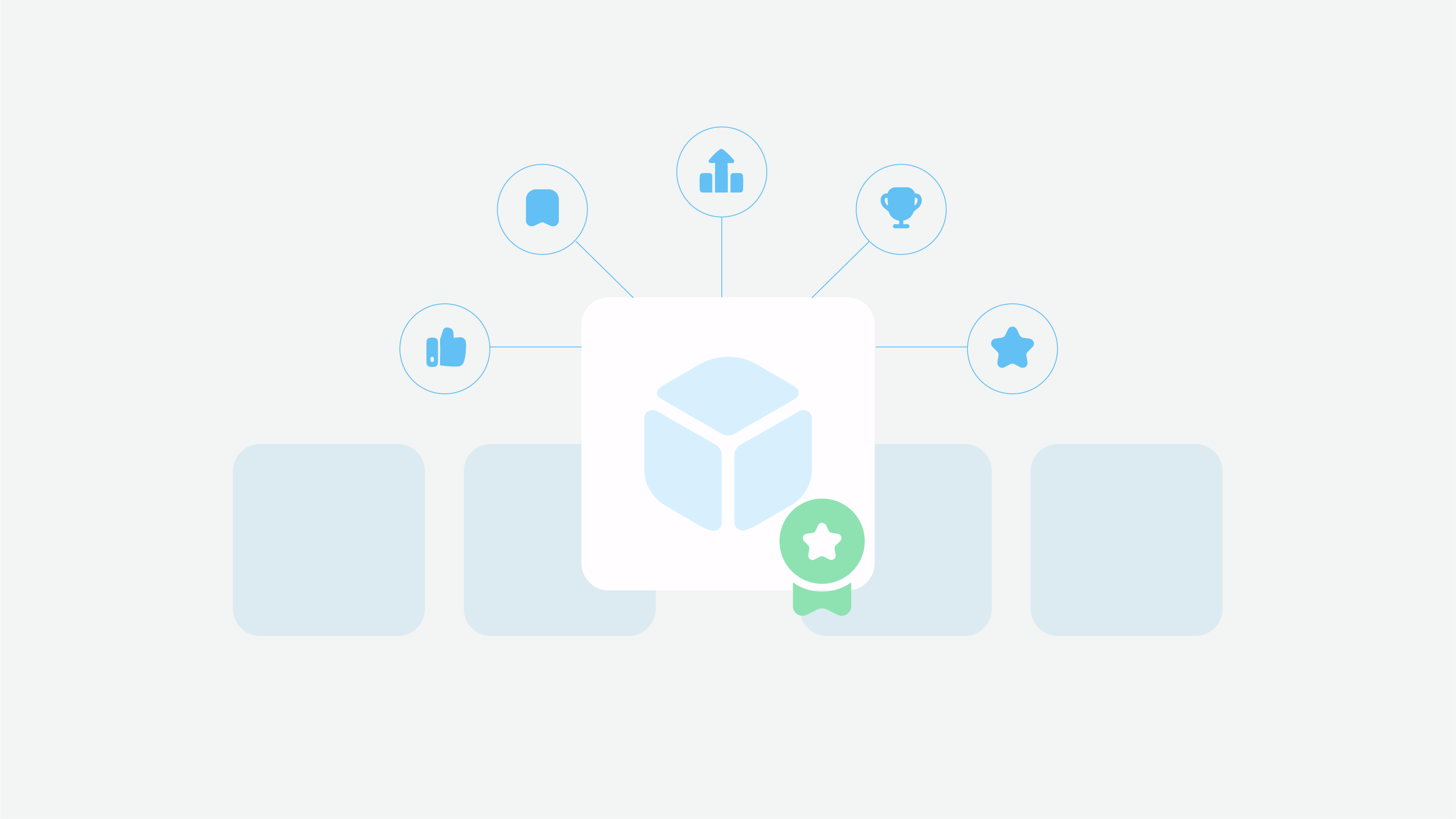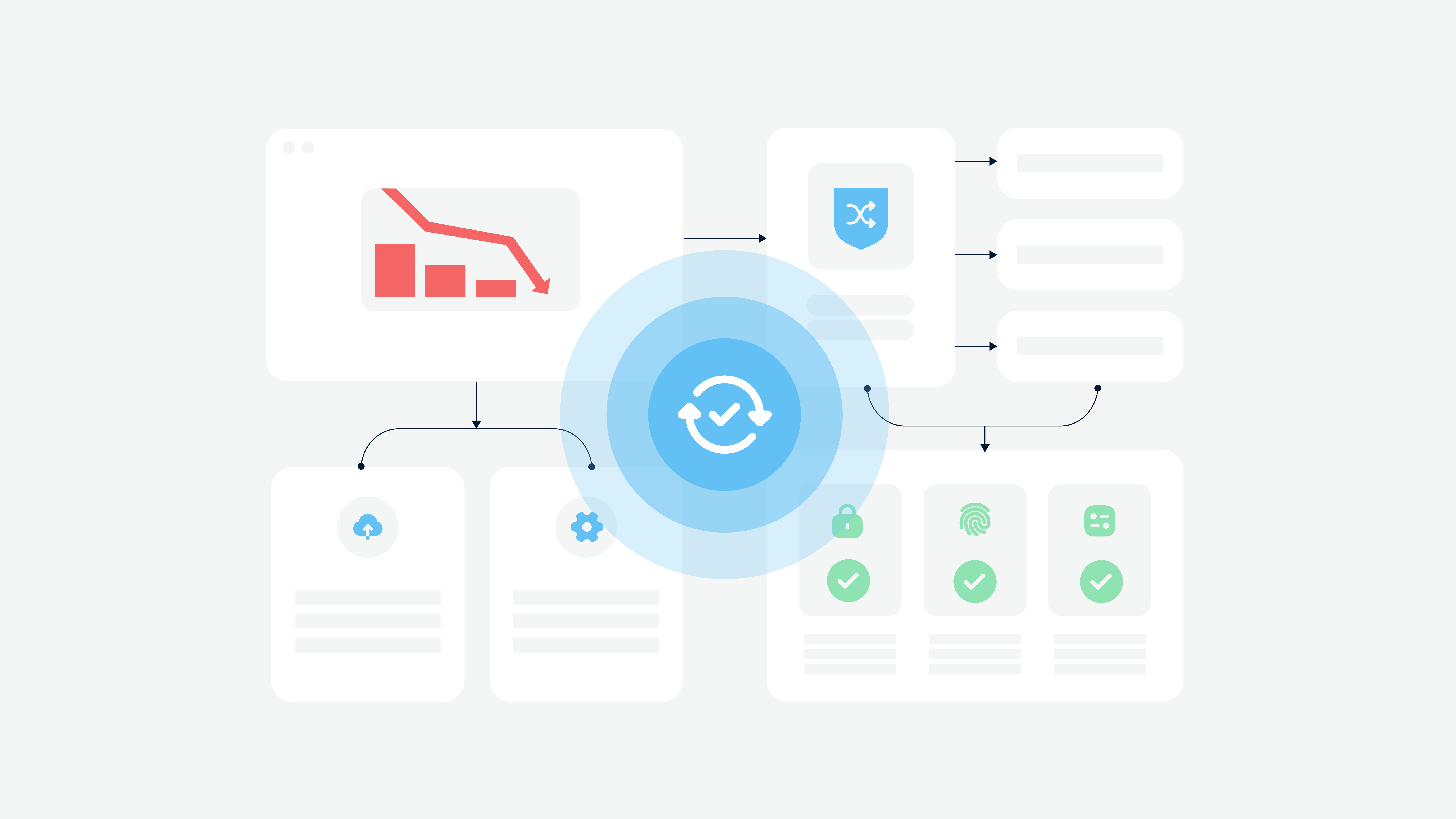Interactive learning platforms are powerful tools to engage students in the digital age. They have become crucial for educators, students, and institutions worldwide.
In this article, we will delve into the world of learning platform development, trying to explain how they are created, the different types available, and their pivotal role in contemporary education. We will also navigate through the diverse paths of digital learning and uncover the current trends in e-learning that are shaping the future of education.
How to Create an E-Learning Platform
E-learning development may seem like a challenging task, but with the right approach, it is doable. Of course, the number of steps each e-learning developer takes depends on the project’s complexity and the customer’s specific needs. However, a simplified version of the roadmap looks like this.
Step 1. Definition of the niche, specific needs, and requirements
It is very important to conduct professional research to determine the market niche, the main competitors and their strengths and weaknesses, business requirements, and your needs.
What knowledge or skills do you want to impart? Are you focusing on K-12 education, college courses, professional development, or something completely unique? All this should be clearly defined at the first stage in order to allocate resources and set clear tasks for the e-learning developer correctly.
Step 2. Creating content
Competition in the e-learning courses industry is fierce, so newbies need to create effective and high-quality content, including videos, quizzes, assignments, and extras. Make sure your content meets the learning needs of your target audience.
Step 3. Choose a Learning Management System (LMS)
It is essential to choose a convenient and reliable LMS. You can also hire an e-learning developer to create a custom system to meet your needs. This is necessary for effective course materials management, student registration, and progress tracking.
Step 4. Integrate interactivity
Interactivity is a critical component of learning. So, ensure your e-learning developer adds interactive elements like quizzes, discussions, and live sessions to engage students actively.
Step 5. Professional design
Professional UX/UI design is a huge part of the success of any product, especially when it comes to a virtual learning platform. It should make the solution convenient, intuitive, and attractive for students.
Every e-learning developer knows that the interface should be easy to navigate. Also, consider the importance of responsive design for mobile users.
Step 6. Development of a security and privacy system
You’ll probably want to add payment options. But even without them, your students will be sharing their data with you, which requires protection from both an ethical and regulatory perspective.
So, include resources in your e-learning development budget to implement strict security measures to protect user data and privacy.
Step 7. Support and reach
Online learning is about constant maintenance of the product itself and user support. The more marketing effort you put in and the bigger your reach, the better support the product will need.
Don’t have anyone in mind? Contact us! We know how to help.
Key takeaways
- Conduct professional research to determine market niche, competitors, business requirements, and specific needs.
- Create effective and high-quality content. Ensure the content aligns with the learning needs of the target audience.
- Select a convenient and reliable management system.
- Add interactive elements like quizzes, discussions, and live sessions to engage students actively.
- Ensure the design is convenient, intuitive, and attractive for students.
- Consider responsive design for mobile users.
- Implement security measures to protect user data, especially if payment options are involved.
Types of Online Learning Platforms You Can Create

There can be many different products in e-learning development depending on the needs and requirements of the customer. These can be simple custom systems for internal use, university applications, or international complex products.
Modern e-learning developers and instructional designers create customized solutions with absolutely unique features. However, in general, several main groups can be identified.
Learning management systems
LMS platforms are the backbone of online education and learning platform development. They make it easy to create, manage, and deliver educational content. You are probably familiar with the most popular options of such systems – Moodle, Canvas, or Blackboard. Every e-learning developer will tell you that custom LMS development is the best way to personalize features and branding.
It is also a comprehensive online learning software designed to facilitate the administration, documentation, tracking, reporting, and delivery of training courses or programs. These systems offer a centralized platform for teachers and students, streamlining various aspects of the learning process. So, you may need to find experienced e-learning developers and instructional designers to create the perfect LMS.
The main characteristics of learning management systems
- E-learning developers create LMSs to help educators create, organize, and store learning materials such as course documents, presentations, videos, and assessments in one place.
- Administrators can manage user accounts, including user registration, profile creation, and access control. Instructors can assign roles and permissions, ensuring that the right people have access to certain resources, which is especially important in online learning.
- This is a system for creating and conducting courses. Educators can design and customize courses and include multimedia content and interactive elements. Your e-learning developer can also design features for conducting courses synchronously or asynchronously, which ensures flexibility of the learning process.
- You can ask your e-learning developer to add functionality for tests, assignments, and exams to assess and track progress.
- Developers and instructional designers often include communication tools in such platforms. These can include discussion boards, chat, and email features that allow students and faculty to interact.
- The LMS generates data that can be used to evaluate student progress and the effectiveness of learning materials. This data-driven approach allows educators to make informed decisions to improve their teaching methods and e-learning development.
Many e-learning developers and instructional designers create systems that offer customization options, allowing institutions to tailor the platform to their brand and specific needs. This ensures a consistent and professional user experience.
Common challenges of the learning management system
Implementing an LMS can be expensive, including initial setup costs and ongoing maintenance costs. Also, almost every e-learning developer must think about encouraging teachers and students to adopt the new system, and it can be difficult.
In addition, protecting students’ confidential data is a top priority, and compliance with data protection regulations is a difficult task in the case of an LMS.
Traditional learning management platforms
Such online learning platforms are the basis of educational technologies, serving as fundamental systems that paved the way for modern e-learning.
Key characteristics of traditional platforms in learning platform development
- Each e-learning developer concentrates functionality around the ability to manage courses and organize them. This includes setting up learning modules, uploading course materials, and scheduling assignments and assessments.
- These platforms provide user management features that allow administrators to control student enrollment, account permissions, and access control.
- Your e-learning developer can develop custom functionality for teachers so that they can set evaluation criteria, track student progress, and provide timely feedback.
- Virtually every traditional online learning platform supports content creation and management, making it easy for instructors to upload and organize course materials such as documents, presentations, videos, and links to external resources.
Traditional LMPs have a long history of successful use in educational institutions and enhancements by e-learning developers, providing a robust, reliable infrastructure for course management. They offer a structured learning environment that promotes an organized approach to teaching and learning.
Also, every e-learning developer monitors the convenience of such systems. Teachers and students of e-learning courses can easily navigate these systems, shortening the learning curve.
Challenges of traditional learning management platforms
Many traditional LMPs lack the innovative features seen in modern platforms, which can limit the range of learning methods and engagement opportunities. They can also be challenging to adapt to new learning technologies and strategies.
Also, traditional LMPs can involve upfront costs for software licenses and maintenance, which can financially burden smaller educational institutions.
Open-source learning management platforms
These platforms are characterized by their commitment to open, shared, and accessible educational technologies. By providing an alternative to commercial LMS options, such product as open-source online learning platform has gained popularity among educational institutions, nonprofits, and organizations looking for more flexibility and control over their digital learning environment.
Key features of open-source learning management platforms
- One of the main advantages of open-source LMPs is their high degree of customization. E-learning developers and instructional designers include different customizing options for the user interface, features, and integration with other systems.
- Open-source platforms are often created, maintained, and supported by a community of e-learning developers and educators. This collaborative approach ensures that the platform remains up-to-date, secure, and user-friendly.
- Every e-learning developer designs open-source LMP to be accessible and inexpensive, making it suitable for educational institutions with limited budgets. It can be especially useful for small schools, nonprofits, and startups that can hire only one e-learning developer for maintenance.
- In e-learning development, they are known for their compatibility with other educational technologies and can easily integrate with various tools and services, expanding their functionality.
Such solutions are cost-effective as they are usually free to use. This makes them attractive to organizations with limited budgets or free e-learning courses. In addition, users are not tied to a specific provider and can hire one specific e-learning developer for maintenance. This promotes independence and flexibility in the choice of technologies.
Challenges of open-source learning management platforms
Implementing and maintaining an open-source LMP may require a certain level of technical expertise. Organizations without in-house IT support may face challenges in this regard and may need to hire developers or consultants.
Also, the initial setup can be more difficult compared to commercial alternatives. Although open-source communities provide support, users may not receive the same level of dedicated customer help offered by commercial vendors.
Massive Open Online Courses (MOOCs)
MOOCs have gained immense popularity precisely because of their wide availability. They offer a variety of e-learning courses at universities and institutions around the world, often free or at low cost. Platforms such as Coursera and edX are the most famous examples of MOOCs.
They represent an innovative approach to online learning that uses digital technologies to offer free or low-cost, high-quality educational content to a global audience. Every e-learning developer will confirm that such platforms are flexible and have the potential to democratize education, making it available to anyone with an Internet connection.
Key features of MOOCs
- As the name implies, any e-learning developer designs such a product for a huge audience and mass coverage. The platform can attract thousands or even millions of learners from different backgrounds, geographies, and age groups.
- MOOCs are open to anyone with an Internet connection, regardless of their educational background. Students can include high school students, college graduates, professionals looking to further their education, or people looking to learn new skills.
- MOOCs cover a wide range of subjects, from computer science and mathematics to the humanities and arts. These courses can be developed by universities, professors, or e-learning companies.
- Such platforms usually operate entirely online through web-based platforms. Students can access study materials, lectures, tests, and assignments via the Internet.
- Also, any e-learning developer will confirm that many MOOCs are designed for self-paced learning, allowing students to study at their own convenience.
- It is very important to include interactive elements in e-learning development. MOOCs have discussion forums, peer reviews, and live webinars to foster a sense of community among learners.
Thus, such products are available to a global audience, breaking down geographic barriers and providing learning opportunities for communities. Learners can choose from a wide range of courses to improve their knowledge, develop new skills, or even work towards a degree.
And, of course, community is of great importance. Every e-learning developer who works on such a solution makes a contribution.
Challenges of MOOCs
MOOCs often suffer from low completion rates. Many students enroll but do not complete the courses they begin, raising questions about their effectiveness in awarding credentials or degrees. This certainly requires developers to look for new approaches to design and user engagement.
Some MOOCs may lack rigor or reliable assessment methods. In addition, they can limit interaction. Although MOOCs include discussion forums and peer interaction, they may lack the depth of engagement found in traditional classrooms.
Also, MOOCs may struggle to offer a personalized learning experience compared to traditional education. Such platforms are still developing in terms of recognition and trust in academia.
Key takeaways
- Learning management systems make creating, managing, and delivering educational content easy.
- It is a centralized platform for course materials management and student registration with user account management, roles, and permissions.
- Challenges include initial setup costs, adoption, and data protection.
- Traditional learning management platforms focus on course management, user management, and content creation.
- They promote an organized approach to teaching and learning.
- Challenges of traditional LMP include limited innovative features and upfront costs.
- Open-source learning management platforms are known for high customization and flexibility.
- They are maintained and supported by e-learning developer communities and are usually free to use.
- Challenges include the need for technical expertise and setup difficulties.
- Massive open online courses (MOOCs) are designed for a massive, diverse audience and are open to anyone with an Internet connection.
- Challenges include low completion rates, assessment reliability, and personalization.
Current Trends in E-Learning
The global online education market is projected to register a CAGR of 9.23% during the forecast period to reach a total market size of more than $319 billion in 2025, increasing from $187 billion in 2019.
The main factors for the growth of the market are the increase in Internet coverage, as well as the growing adoption of cloud solutions in combination with the huge investments of the main market players in improving the security and reliability of cloud educational platforms. The number of educational service providers is growing, and with it, the amount of educational content online.
Additionally, advances in artificial intelligence and the rapid growth of the Internet of Things (IoT) will be integral to creating exceptional user experiences on educational platforms. Every e-learning developer knows that this will also significantly affect the market growth and development of educational products in the near future.
As you can see, e-learning developers are constantly creating new solutions that would perfectly fit into the world of technological progress. Each platform has its own unique features adapted to the needs of users of different groups. However, they all need to be secure, fast and have an intuitive design.
If you’re considering building a learning solution, we’d love to help. Each e-learning developer in our team has extensive expertise and high skills to create a truly unique solution. Just contact us, and let’s discuss your vision!












